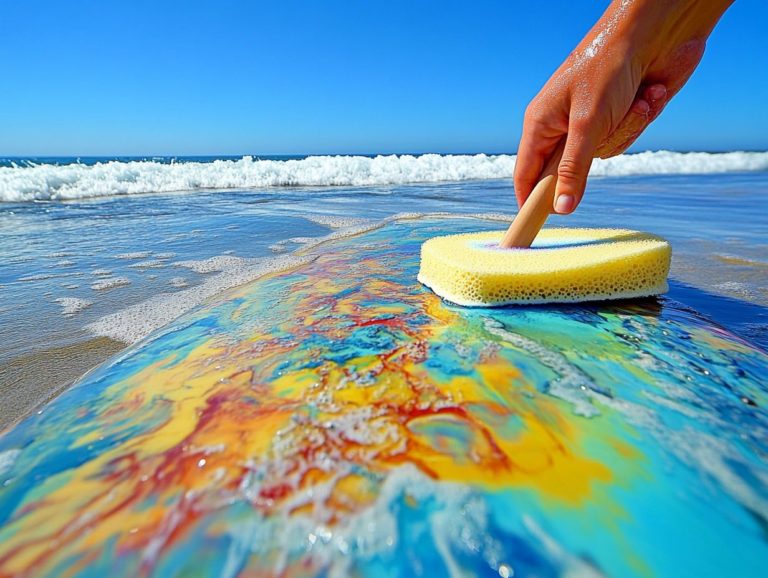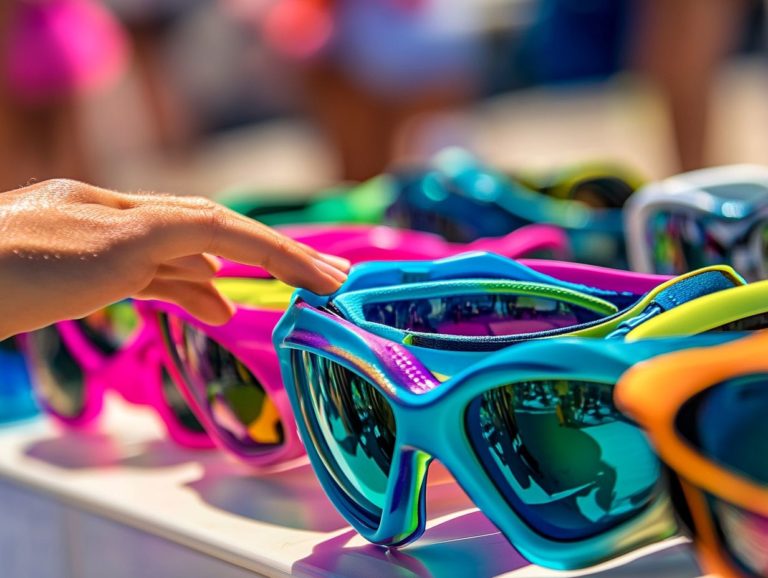What to Know About Surfboard Wax
Surfboard wax is indispensable for any surfer eager to optimize grip and elevate performance on the waves.
With an array of wax types designed for various conditions and personal preferences, selecting the right one can feel quite daunting.
This guide explores the different wax types, offers a step-by-step process for application and removal, and emphasizes crucial factors like water temperature and wave conditions.
Get ready to discover tips for maintaining your wax, along with some intriguing alternatives to enrich your surfing experience. Prepare yourself to ride with confidence!
Contents
Key Takeaways:
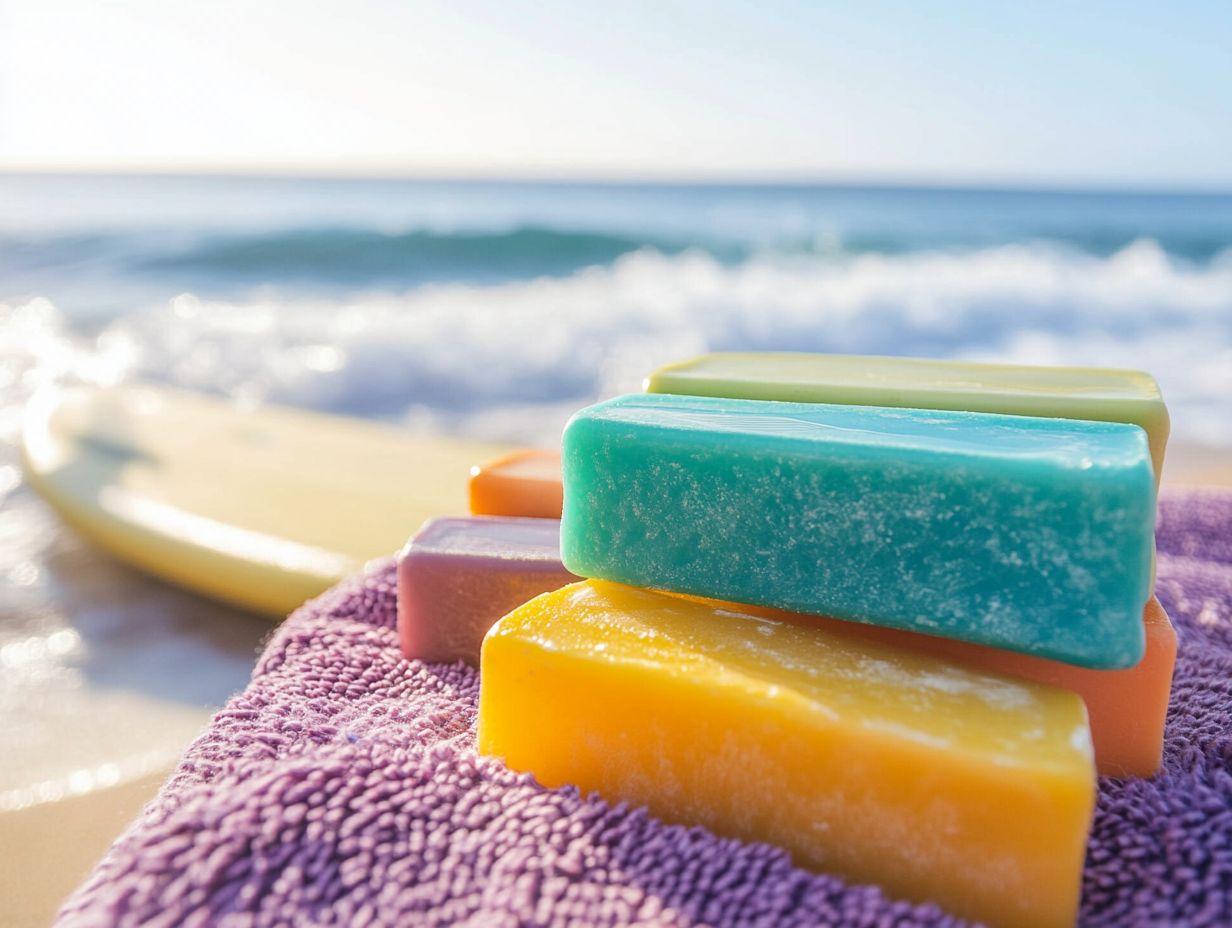
- Choose the right type of surfboard wax based on water temperature and wave conditions for optimal performance, ensuring solid surfboard grip.
- Proper application and removal techniques are essential for maintaining a clean and grippy surfboard.
- In addition to surfboard wax, consider using alternative grip enhancers for your surfboard, such as traction pads or grip tape.
What is Surfboard Wax?
Surfboard wax is a specialized compound crafted to enhance your grip on the board, enabling you to maintain control while riding those exhilarating waves. It comes in various formulations tailored for different water temperatures and conditions, boosting your performance and keeping you safe on the waves.
Renowned brands like Sticky Bumps, Sex Wax, and Mrs. Palmers have shaped surf culture by offering the perfect wax for diverse surfing environments. Whether you’re navigating the warm waters of Charleston or tackling the chilly swells of San Diego, there’s a wax for you.
Knowing what surfboard wax is made of is vital. It typically combines natural and synthetic ingredients to deliver the ideal tackiness you need. Selecting the right wax based on your conditions is essential soft wax, which is easier to use in warm water, allows better grip during rides, while a firmer formula is necessary for colder environments.
This adaptability enhances your grip for daring maneuvers and significantly elevates your overall performance on the waves. Surfboard wax isn t merely a product; it s an essential tool that can make all the difference when it comes to achieving that perfect ride.
Types of Surfboard Wax
You ll discover a variety of surfboard wax types, each carefully made for different water temperatures. This ensures you achieve the optimal grip on your board as you navigate diverse wave conditions, from Folly Beach to various surfing spots worldwide.
Cold water wax is designed specifically for chillier temperatures. Warm water wax and tropical wax are tailored for warmer climates, offering the perfect consistency and stickiness for peak performance during your adventures in the ocean.
Grasping the nuances of these wax types is crucial for any surfer aiming to enhance their grip, explore various wax application techniques, and maintain their board effectively.
Comparing Different Types
When you re comparing different types of surfboard wax, it s crucial to delve into their formulation and the water conditions they re suited for. Each type offers distinct benefits tailored to specific surfing environments.
For instance, cold water wax has a harder consistency that helps maintain grip in lower temperatures. In contrast, warm water wax is softer and more pliable, making it ideal for warmer spots like the beaches of Folly Beach.
Tropical wax is crafted for the hottest conditions. It ensures optimal stickiness, so you can perform at your best without worrying about slipping off your board. Using the wrong type of wax can turn your session into a frustrating ordeal; a wax that s too soft in colder conditions might leave you grappling for grip.
Many surfers suggest experimenting with various wax types until you discover the perfect match for your local water temperatures. For example, at Folly Beach, opting for warm water wax during the summer months can significantly enhance your performance. It transforms your choice into an essential factor for improving your ride quality.
Don’t wait! Experiment with different waxes to find your perfect match today!
Application and Removal of Surfboard Wax
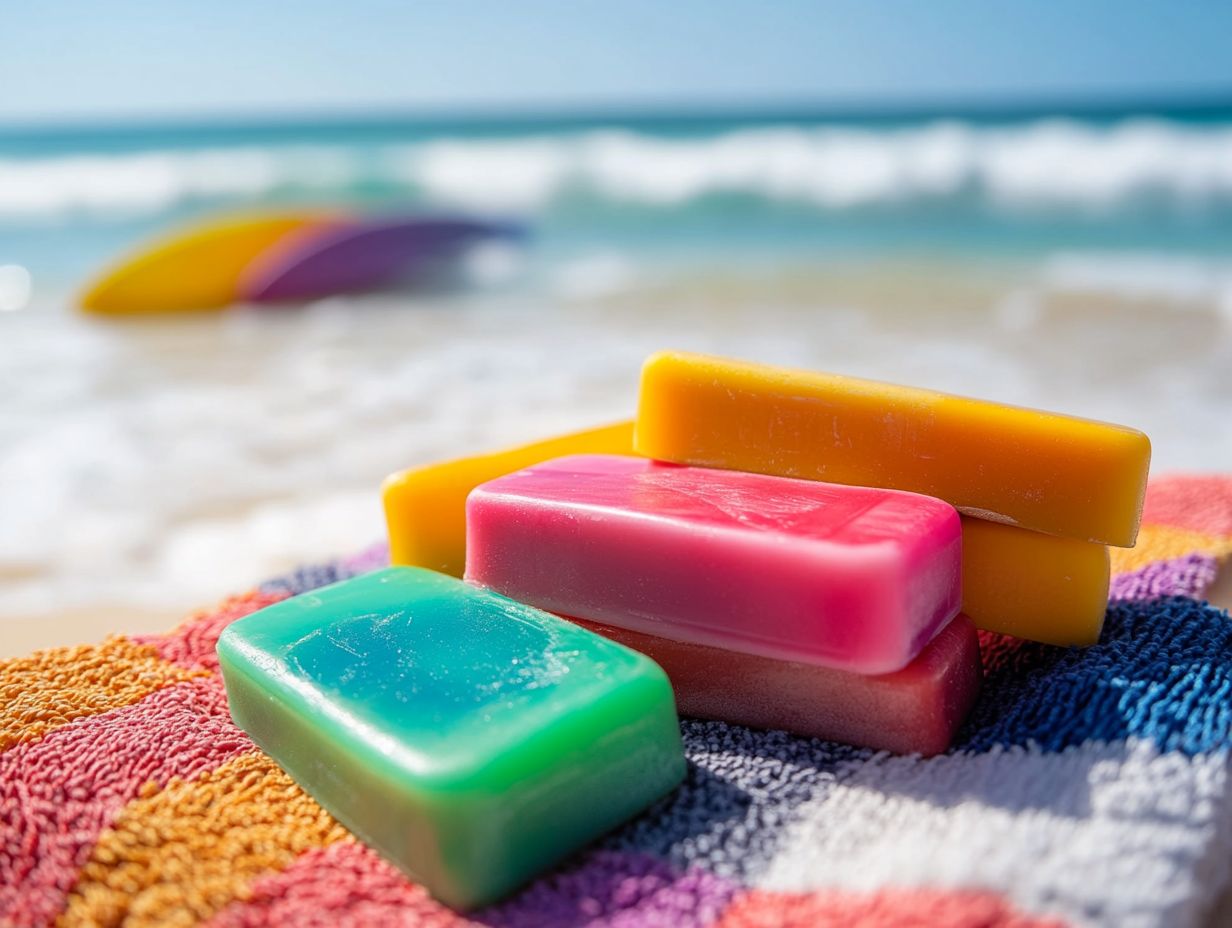
Proper application and removal of surfboard wax are essential for maintaining grip and performance. It requires the right techniques and tools to achieve the best results.
- Start by thoroughly cleaning the surfboard surface, ensuring it s free from debris.
- Next, apply an initial layer of wax to establish a solid foundation for grip.
- After that, layer on the final layer of wax for enhanced stickiness.
When it s time to remove the wax, use a wax comb and a wax remover. This will help preserve the board’s surface and streamline the process, making it easy for effective board maintenance.
Step-by-Step Guide
Following a step-by-step guide on applying surfboard wax can elevate your grip and enhance your surfing experience. This ensures your surf equipment remains in top-notch condition and ready for your next adventure.
Begin by cleaning your board thoroughly. Then apply the initial layer of wax evenly across the surface, paying special attention to areas where your feet will make contact.
Next, layer on your final layer of wax to create extra grip, focusing on the specific zones that need it. Mastering the application of surfboard wax boosts your performance and extends your board’s life.
Before you start, many seasoned surfers suggest using a soft cloth or dedicated board cleaner to remove dust or salt residue. This can significantly enhance the wax’s effectiveness.
For applying the final layer, use a circular motion. This technique yields an optimal texture. Imagine the thrill of that first catch after perfecting this method; feel the rush of confidence as you paddle out!
Be mindful of common pitfalls, such as over-applying wax. This can lead to slippage instead of the traction you want, potentially compromising your ride.
Factors to Consider When Choosing Surfboard Wax
Choosing the right surfboard wax involves considering several important factors, such as water temperature and wave conditions. These elements profoundly influence the wax’s effectiveness and your overall surfing experience.
Selecting the appropriate wax type cold water wax, warm water wax, or tropical wax ensures you achieve optimal grip and control. This enables you to navigate diverse wave conditions with confidence.
This guide helps you choose the best wax for your surfing style.
Water Temperature and Wave Conditions
Understanding water temperature and wave conditions is crucial when selecting the right surfboard wax. These elements directly impact your wax’s effectiveness and your overall surfing experience.
For example, cold water wax is specially formulated for lower temperatures. In contrast, warm water and tropical waxes suit warmer climates. This ensures you maintain the necessary grip for optimal performance, whether you re surfing in Charleston or soaking up the sun in San Diego.
The choice of wax is even more pivotal when navigating varying wave conditions. Consider Hawaii’s powerful swells compared to Malibu’s mellower beach breaks. The size and force of the waves determine not only the type of wax you need but also how you apply it.
Surfers tackling aggressive waves may require a stickier formula to enhance board control. Consider that warmer air temperatures in places like Costa Rica can soften your wax, prompting you to opt for a harder option.
This highlights how much environmental factors influence your selection. With this knowledge, you can make informed decisions that elevate your ride and enjoyment on the water.
Don’t miss out on the perfect wave due to improper wax choice. Get the right wax today!
Maintaining and Storing Surfboard Wax
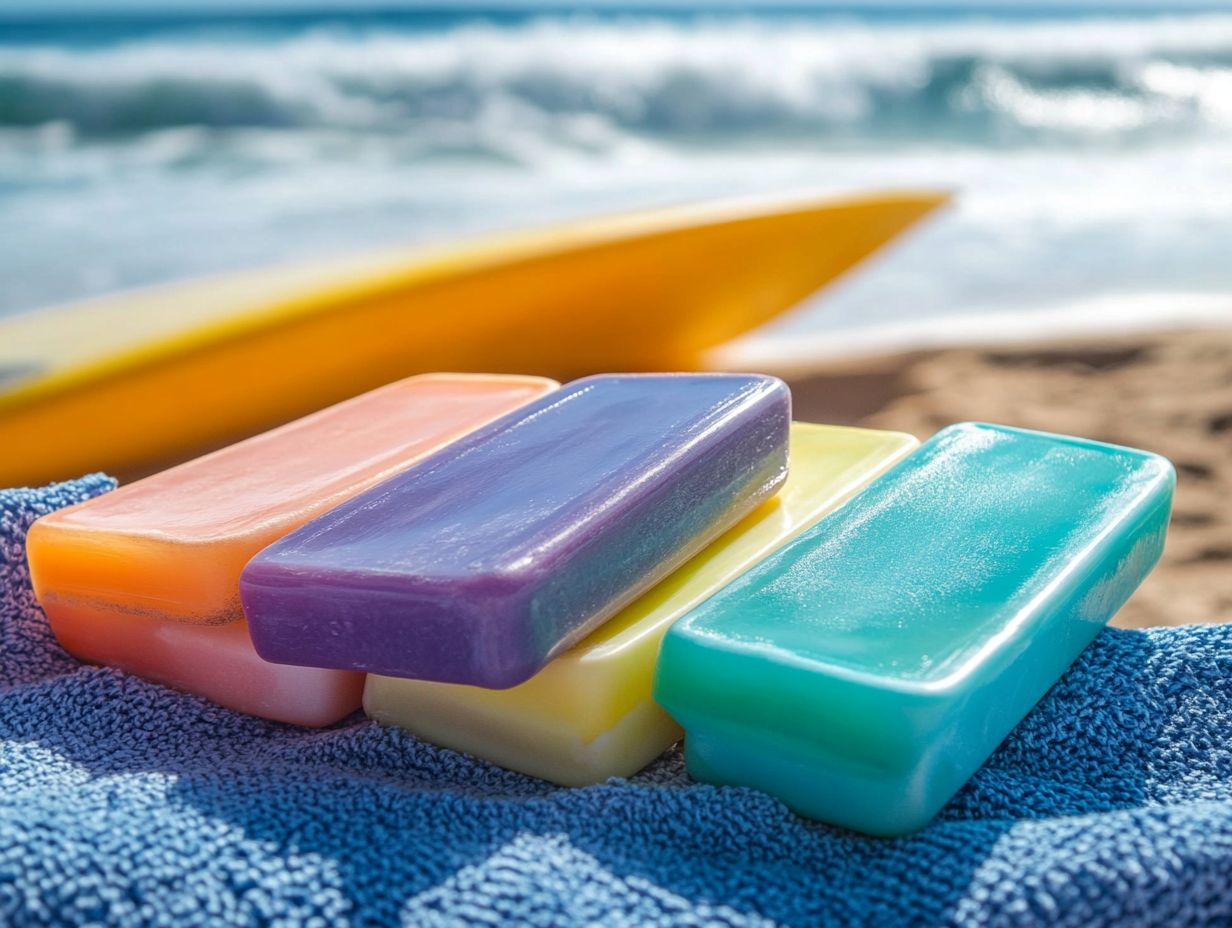
Proper maintenance and storage of surfboard wax can extend its lifespan. Embracing a few key practices is essential for effective board maintenance.
Regularly cleaning your waxed board helps eliminate debris and contaminants that accelerate wax deterioration. Store your wax in a cool, dry place to preserve its consistency and enhance your board maintenance routine.
Tips for Prolonging Wax Life
To extend the life of your surfboard wax, consider a few essential tips that elevate your board maintenance and wax application strategies. Avoid exposing wax to extreme temperatures or direct sunlight; this can cause it to melt or harden, diminishing its effectiveness.
Using a wax comb to smooth and refresh the wax surface can significantly enhance grip and prolong the wax’s lifespan. Establish a routine for inspecting your wax after a few surf sessions to catch any wear early on.
This proactive approach allows you to reapply wax in a timely manner, ensuring it stays in peak condition. When your surfboard is not in use, store it in a temperature-controlled environment, ideally within a bag, to protect it from harmful elements.
Incorporating these simple yet effective practices will enhance both the performance of the wax and your overall enjoyment on the waves. Don’t miss out on these tips!
Alternatives to Surfboard Wax
While surfboard wax is crucial for maintaining grip, there are alternatives that can elevate your surfing experience. Traction pads, for instance, offer a reliable grip solution without the hassle of traditional wax.
These grip enhancers are favored by surfers seeking a long-lasting and mess-free option for their gear. They provide not just ease of application but also effortless removal when needed.
Other Grip Enhancers for Surfboards
Several grip enhancers can complement or even replace traditional wax, like traction pads designed for consistent grip without frequent reapplications. These products are particularly advantageous for surfers who prioritize durability and ease of use, allowing you to focus on riding waves.
Among the options, traction pads stand out for their customizable shapes and thicknesses, enabling you to find a fit that aligns perfectly with your riding style. These pads not only provide excellent grip but also enhance board control, allowing for better foot placement during maneuvers.
While traction pads can be long-lasting and require less maintenance, they may not offer the same convenience for quickly adjusting grip preferences as traditional wax. Ultimately, the choice hinges on your personal preference and the specific conditions you typically encounter.
Frequently Asked Questions
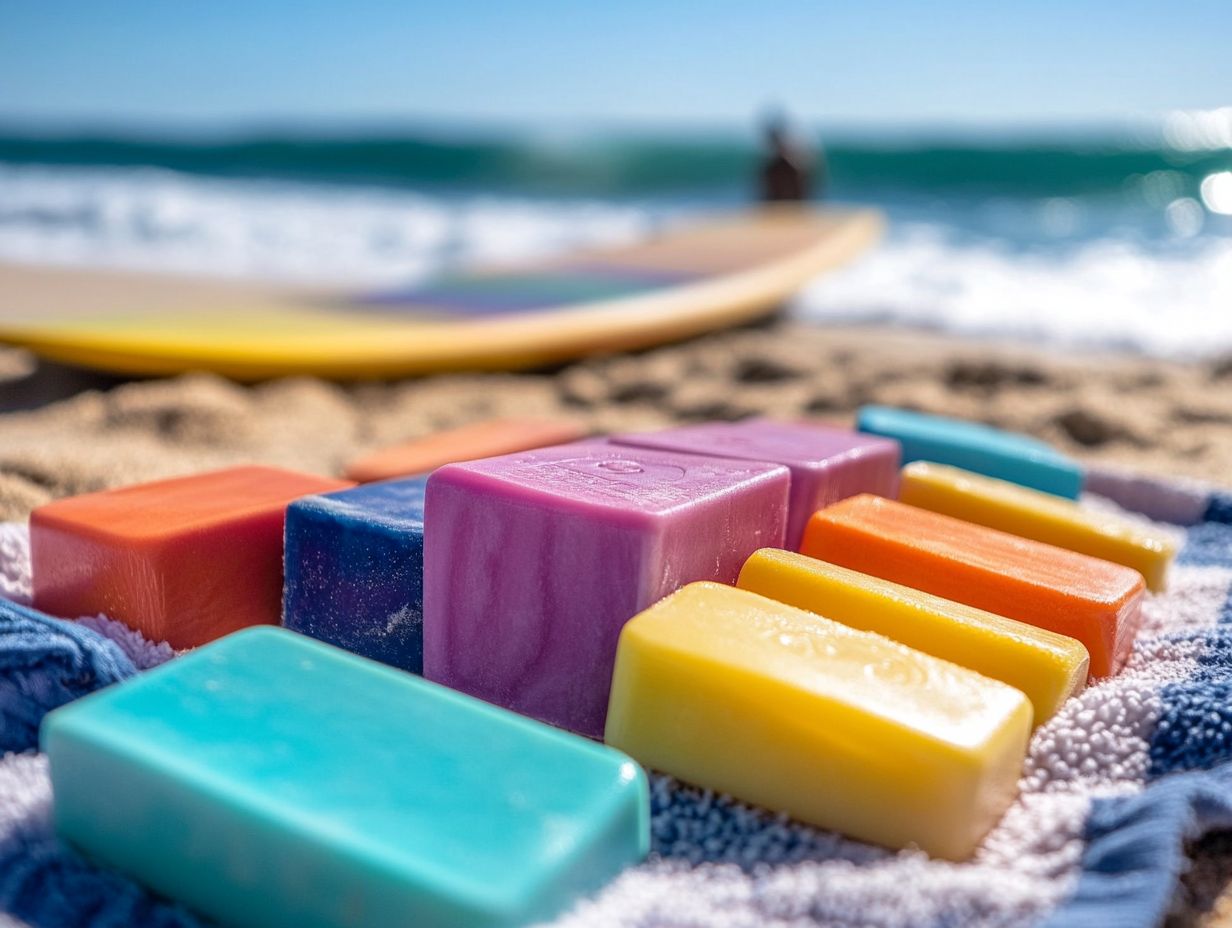
What to Know About Surfboard Wax?
Surfboard wax is a sticky substance applied to the surface of a surfboard. It provides traction for the surfer’s feet and is essential for performance on the waves.
Why do I need surfboard wax?
Surfboard wax provides grip and traction, allowing surfers to stay on the board and perform maneuvers. Without it, the board can be slippery, making it hard to control while riding a wave.
How is surfboard wax applied?
Surfboard wax is typically applied in a circular motion, rubbing it onto the board’s surface. Some surfers prefer a base coat first, followed by a top coat for added grip. Always follow the manufacturer’s instructions for best results.
Try these tips today and feel the difference on your next wave!
What Types of Surfboard Wax Are There?
There are three main types of surfboard wax: base coat, top coat, and tropical.
Base coat wax creates a rough surface on the board, while top coat wax adds extra grip. Tropical wax is softer and stickier, perfect for warm waters.
How Often Should I Apply Surfboard Wax?
How often you wax your board depends on water temperature and how frequently you surf.
Generally, apply a fresh coat every 2-3 sessions or whenever the wax feels slippery.
Can I Remove Surfboard Wax?
Yes, you can remove wax using a wax comb or scraper.
Scraping off the old wax will give you a clean surface for reapplying. This ensures the best grip for your rides!


